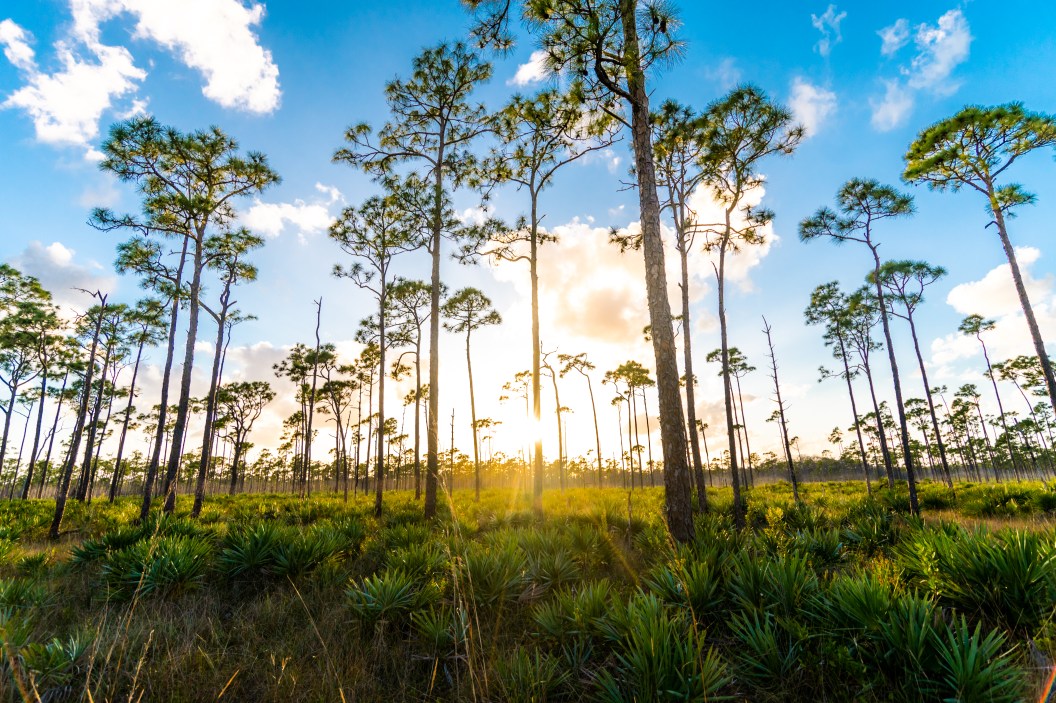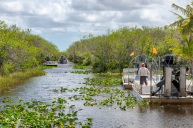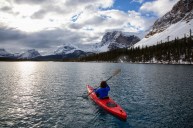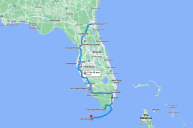Florida is one of the most popular vacation destinations in the United States because visitors have access to endless activities and excursions from top-notch fishing, to fun theme parks, to beautiful beaches and interesting museums. Their national parks, meanwhile, often fly under the radar but are truly the cherry on top of fun things to do in the Sunshine State.
Florida is home to some of the country's most fascinating national parks. These historical sites reside on protected lands that are preserved thanks to Florida's National Park Service.
Whether you want to explore swampy marshlands or relax near crystal-clear waters, you have plenty of options. Each of Florida's 11 national parks can give you the adventure of a lifetime complete with hiking, camping, boating, and more.
Everglades National Park
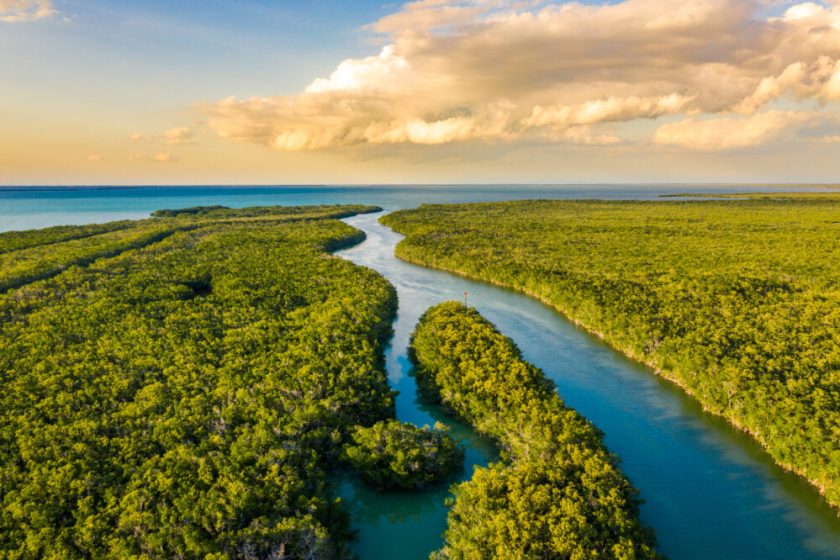
Getty Images
The Everglades National Park hosts the country's largest subtropical wilderness and has one of the world's most diverse ecosystems. If taking a walk on the wild side sounds like your thing, you're in luck with this charming Southern swamp.
Located less than an hour away from Miami, the 1.5-million-acre park is laden with mystery and surrounded by miles of eerie swamp lands and mangrove forests.
The Everglades also serve as a habitat for countless unique and endangered species, so don't be surprised if you have at least one crocodile, manatee, or Florida panther sighting here.
Visitors can navigate this tropical and subtropical landscape on foot or via a guided airboat tour. The park's three main entry points give its millions of visitors easy access to its trails year-round, allowing them to gain entry from the Gulf Coast Visitor Center, the Shark Valley area, or the Ernest F. Coe Visitor Center.
This park is also recognized as an International Biosphere Reserve, a World Heritage Site, and a Wetland of International Importance.
Everglades National Park offers plenty of trails and activities, plus the chance to see some unique wildlife. Here's where to head:
- Shark Valley: Get started at the Shark Valley Visitor Center, then head out on the two-hour Shark Valley Tram ride. A guide will take you through 15 miles of Everglades National Park to a scenic overlook. You can take this same ride via bicycle—bring your own or rent one when you arrive! You can also opt for a bike ride with a National Park Ranger or enjoy a meteor shower ride. Cyclists also enjoy riding along the Shark Valley Slough for its incredible views.
- Anhinga Trail: This popular trail begins at the Royal Palm Visitor Center and is less than a mile round trip of paved walkways and boardwalks, but you can expect to see a variety of wildlife along the way—including alligators!
- Ten Thousand Islands: Explore this well-known yet lightly visited area, featuring a maze of mangroves and some stellar coastal scenery. Boat tours are available through this area, but it's even better to kayak there yourself! Rentals are available if you can't bring your own, and you'll have the chance to spot dolphins, manatees, and alligators.
- Flamingo by Main Park Road: This single road in Everglades National Park runs the entire length, providing you with plenty of sights along the way. You can hit the aforementioned Anhinga Trail, stop at the Pa-hay-okee Overlook, see a variety of birds—possibly even a flamingo—surrounding several ponds, and end your day at the marina in Flamingo. Here you'll likely see some manatees and crocodiles!
Big Cypress National Preserve
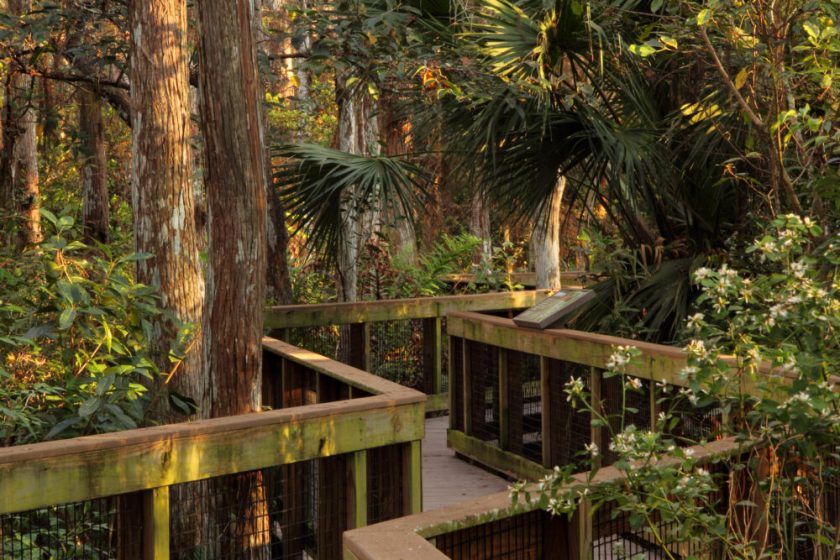
Getty Images
Located on Florida's southwest coast, Big Cypress National Preserve was established in 1974, and the 729,000-acre historic site is the country's first national preserve. However, the Big Cypress Swamp has been around for tens of thousands of years; the Miccosukee, Seminole, and Calusa tribes once settled here along with 15th-century European explorers.
Here, visitors can take a guided buggy tour of the Big Cypress Swamp, a massive body of freshwater that's surrounded by beautiful tropical and temperate plants. You're also exposed to diverse wildlife like the endangered Florida panther. Fun fact: This national preserve is bigger than the state of Rhode Island.
Visitors can explore the natural landscape by hiking, canoeing, or kayaking. It's also possible to enjoy the off-road trail system by ATV or swamp buggies.
Dry Tortugas National Park
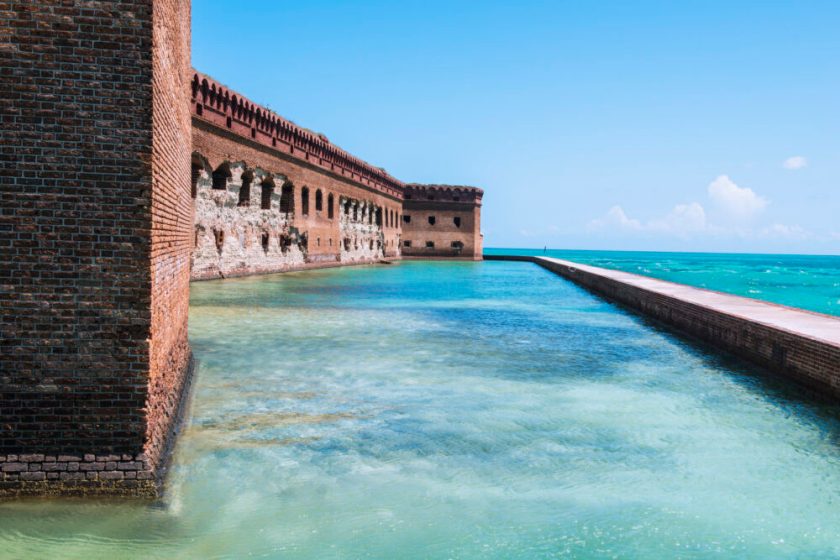
Getty Images
Get away from the hustle and bustle of life and visit Dry Tortugas National Park. Located approximately 70 miles west of Key West, the Dry Tortugas is one of the most remote national parks in the United States; you can only get to this park by seaplane or boat. The 100-square-mile Dry Tortugas National Park primarily consists of open water and has a total of seven small islands—each possessing pristine blue waters and neighboring a serene seaside.
Hidden in the cuff, you'll find the historic Fort Jefferson, a coastal fort built in the mid-19th century. There's also an abundant selection of diverse wild and marine life, including unique bird species, and fascinating coral reefs. It's the perfect place to go snorkeling, birdwatching, or camping near the water.
These are the places you should see first:
- Fort Jefferson: Built in the 1800s, Fort Jefferson is the largest masonry structure in the Northern Hemisphere, and you can learn about the site's exciting history via a guided tour.
- Garden Key: The most accessible area for scuba diving or snorkeling in Dry Tortugas National Park, Garden Key offers four separate sites that are excellent for these activities: Moat Wall, South Coaling Dock Ruins, North Coaling Dock Ruins, and West of Garden Key.
- Bush Key: Walk Bush Key's one-mile loop along the aqua waters, with great views of Fort Jefferson and the other islands. Be sure to check with the National Park Service before you go, though — Bush Key is closed for a portion of the year as a bird nesting site.
- Loggerhead Key: The largest island in Dry Tortugas National Park, Loggerhead Key is only accessible by boat or kayak. This makes for wide-open beaches you can enjoy with little company. You can also scuba dive or snorkel at the Little Africa Reef or Windjammer Wreck.
Canaveral National Seashore
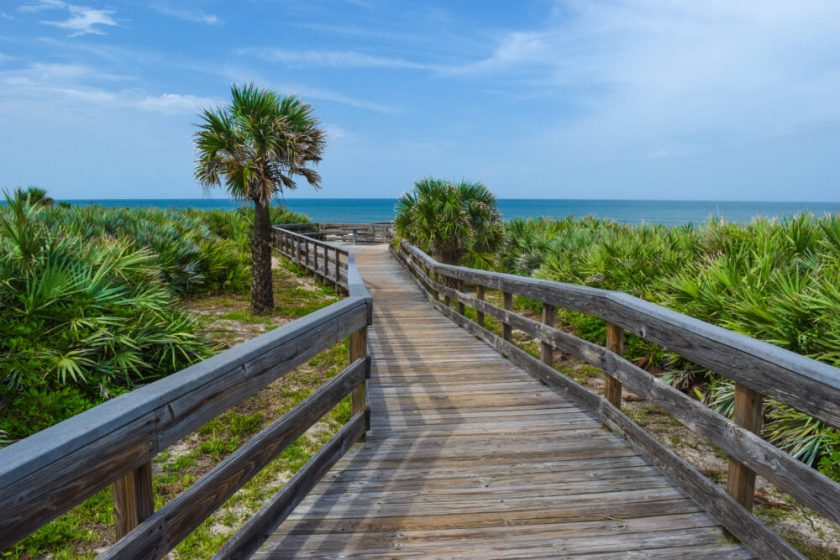
Getty Images
The Canaveral National Seashore is a fascinating destination with a vast assortment of plant and animal life. Located on the longest stretch of undeveloped Atlantic coastline in Northeast Florida, the island's surrounding areas are home to 1,045 plant species and 310 species of birds, including Southern bald eagles and peregrine falcons.
The wildlife here is awe-inspiring, featuring everything from green and leatherback sea turtles and West Indian manatees. There are plenty of activities to do here 365 days a year, whether you're in the mood for fishing, canoeing, or surfing.
In the winter, visitors can enjoy nature walks on its historical trails and views of the ancient Timucua shell mounds.
Gulf Islands National Seashore
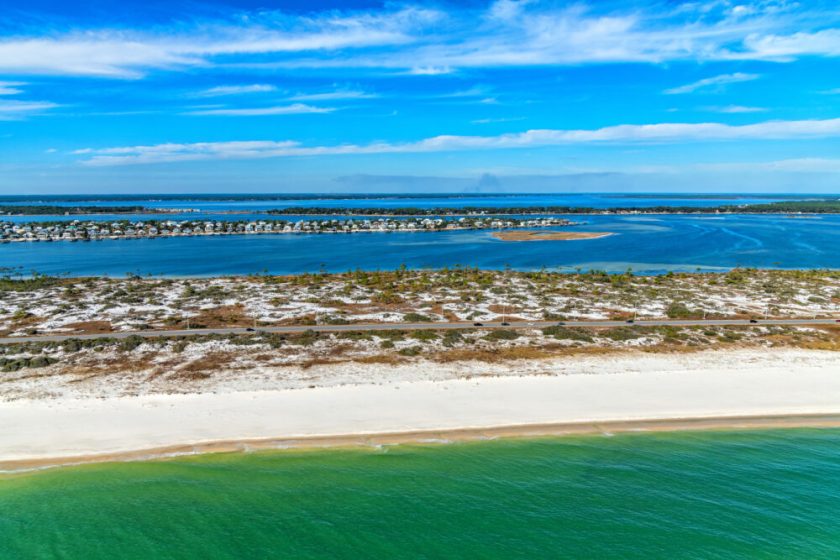
Getty Images
The Gulf Islands National Seashore connects Florida and Mississippi with 160 miles of gorgeous coastal waters. The islands rest on the Gulf of Mexico, and the white sandy beach covered with fertile marshes is the ideal place the enjoy stunning sunsets.
Explore the shore by ferry, watch for one of the more than 280 species of birds in the park, or snorkel or dive off the coast. You can even cast a line in the waters of the Gulf. There's even a campsite that offers direct access to all of the park's amenities, including the Fort Barrancas Trails.
Fort Matanzas National Monument
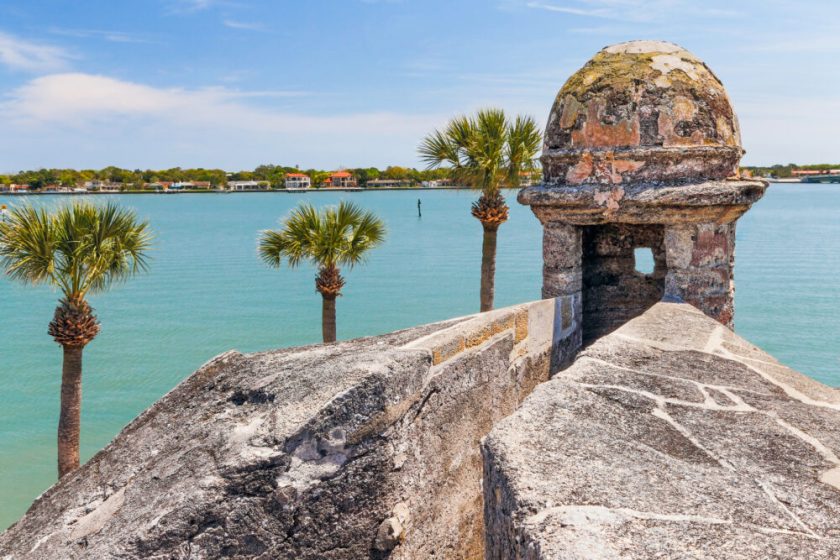
Getty Images
At least once in your life, you should visit the historic Fort Matanzas National Monument. The preserve protects nearly 300 acres of the state's coastal environment, which includes a sprawling salt marsh and barrier island. It also features the Spanish military-built coquina watchtower erected on the Castillo de San Marcos in 1742.
Just 15 miles south of St. Augustine, the Spanish military used this location to safeguard their southern river approach to the military's settlement there. Years later and the place is still intact, complete with picturesque dunes, flora and fauna, and a maritime forest.
While you're visiting, experience the ferry to the fort, walk along the Marsh Trail, fish on the river or ocean, or relax on the beach.
Biscayne National Park
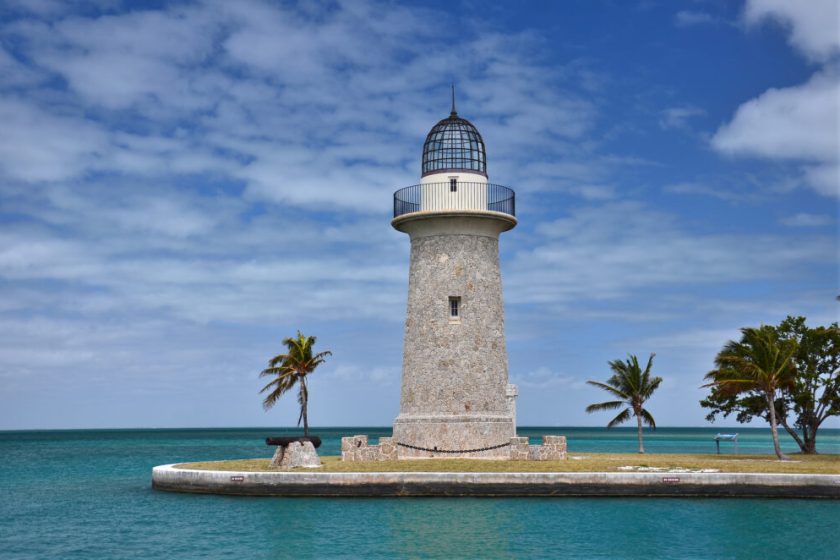
Getty Images
Located south of Miami, the marine paradise is a go-to destination for emerald islands with warm waters and sunny skies. On top of that, the national park offers an abundance of picturesque views and a story detailing over 10,000 years of human history.
Biscayne National Park is primarily water-based—more than 90% of it is submerged—and the park preserves one of the world's longest-living coral reefs. More than 600 species of native fish swim in those waters, which are also populated with dolphins, manatees, and sea turtles. Lying underneath the water's surface are centuries-old shipwreck remains, making it a popular site for scuba diving, snorkeling, and swimming. The serene surroundings include a giant mangrove forest along the shoreline. Visitors can also enjoy boating, camping, and wildlife watching, and they can also walk on the same grounds that pirates, presidents, and pineapple farmers have.
Humans have fished in Biscayne Bay for thousands of years-literally. Human remains and artifacts dating back 11,000 years have been found in the area. So, of course, you can still fish in the national park as long as you have a valid Florida fishing license. Visit the official site for a full list of regulations.
If you're limited on time, these are the must-see places in Biscayne National Park:
- Jones Lagoon: Jones Lagoon comprises Totten Key and Porgy Key and is 0n the National Register of Historic Places. The peaceful waters of Jones Lagoon are prime for kayaking or jumping on a SUP. While on the water, you might see fish, sea turtles, and sharks swimming.
- Boca Chita Key: Only reachable by boat, Boca Chita Key is a visitor favorite featuring a 1930s lighthouse, a half-mile trail with views of Sands Key, a small beach with a picnic area, and campsites.
- Maritime Heritage Trail: This unique series of six shipwrecks is searchable by scuba diving or snorkeling. Beyond the sunken ships, you'll see a variety of fish and coral while swimming through.
- Elliott Key: The largest island in Biscayne National Park, Elliott Key features the seven-mile Spite Highway (with an interesting backstory). The island features a one-mile loop trail, campgrounds, and great fishing spots.
Castillo de San Marcos National Monument
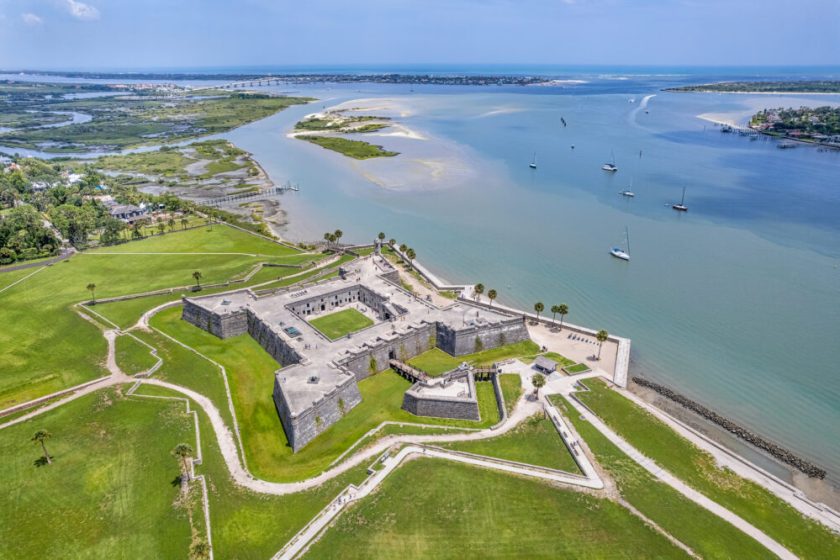
Getty Images
Castillo de San Marcos National Monument preserves the country's largest and oldest masonry fortress, which served as a Spanish Empire post during Spain's settlement of St. Augustine. The fort was built with coquina, a porous and lightweight shell-stone rock.
Castillo de San Marcos is more than 320 years old. Many cultural clashes took place here, from pirate raids to siege attempts led by the British, but those unfortunate events unified the country even more.
Previously known as Fort Marion, the United States officially purchased this site in 1821. It was then used by the U.S. Army until 1899 before it became a national preserve.
While you're there, you can interact with park rangers who offer formal presentations along with casual opportunities to ask questions about the fort. There are also rangers and volunteers in period dress who will pose for pictures, and share stories of the colonists who lived there.
Timucuan Ecological and Historic Preserve
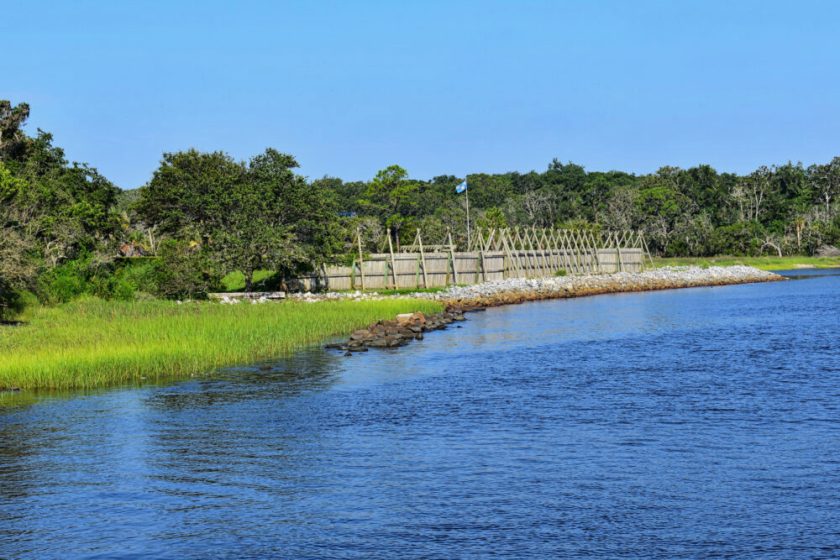
Getty Images
The Timucuan Ecological and Historic Preserve is known for its rich culture and historical background. Having existed for more than 6,000 years, it offers delightful views of salt marshes and coastal dunes.
While here, visitors can learn about the area's native peoples and their life stories—those who roamed the land before European arrival and the shift into the New World. This preserve also houses the historical Fort Caroline and Kingsley Plantation, the oldest surviving plantation house in Florida. The park is open year-round and offers hiking, kayaking, and bird-watching.
Read More: 9 Best National Parks in the U.S. for Every Kind of Outdoor Adventure
De Soto National Memorial
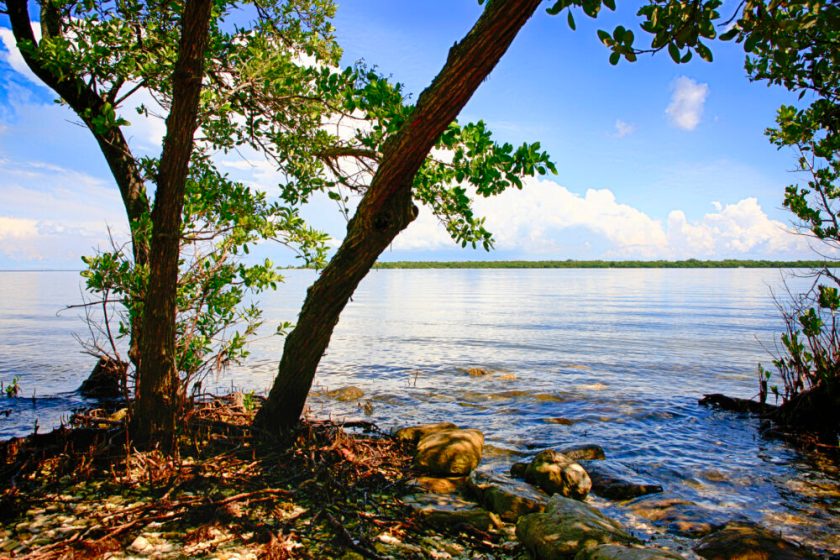
Getty Images
Established in 1948, De Soto National Memorial commemorates the Tampa Bay landing of Conquistador Hernando de Soto's army of soldiers, mercenaries, craftsmen, and clergy in 1539. Those events played a large role in the shaping of United States history, and the park provides education on the impact he had on the Native American population there.
Located in Bradenton, just south of Tampa, the park is open year-round and offers hiking and living history demonstrations.
Fort Caroline National Memorial
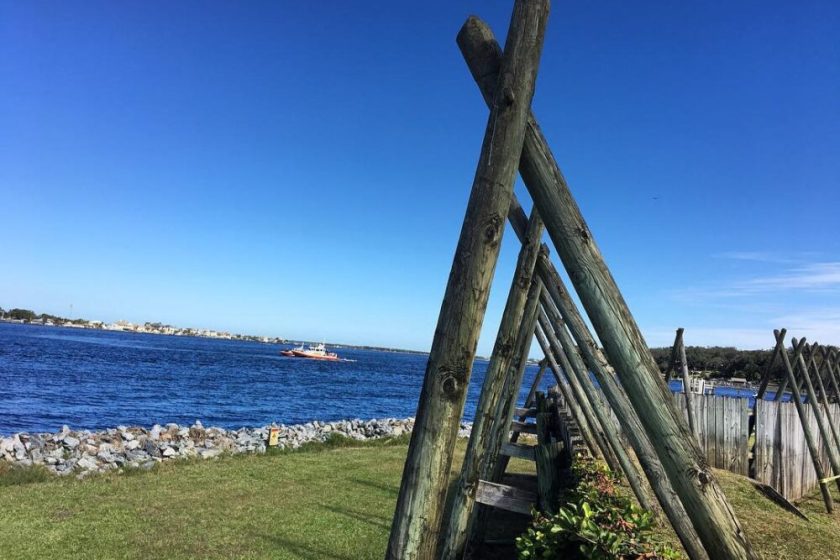
@abuelosmochileros on Instagram
Nestled in Timucuan Ecological and Historic Preserve in Jacksonville, Fort Caroline National Memorial reminds visitors of the French's short-lived occupation during the 16th century.
Territorial battles occurred here between the French, Spanish, English, and American Indians. Visitors venturing through the memorial's hiking paths will experience historical re-enactments of the events that took place. You can also watch for dolphins, and relax at the beach in one of the shady hammocks.
